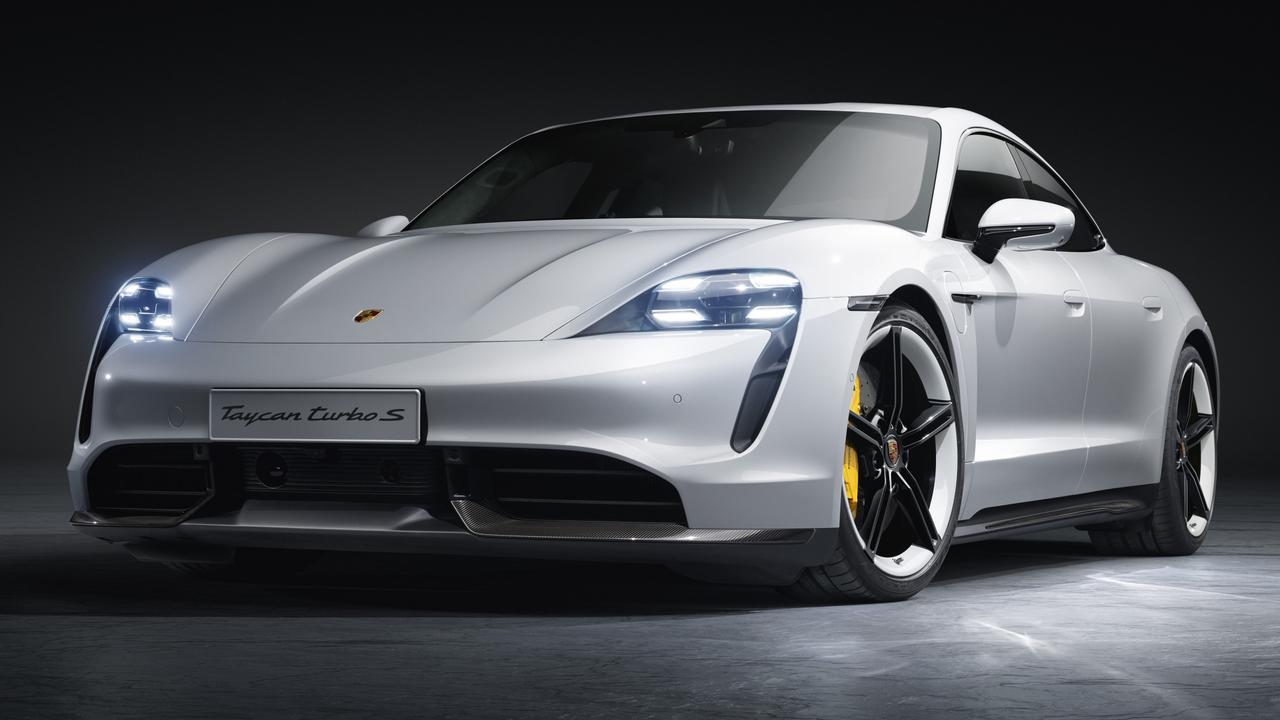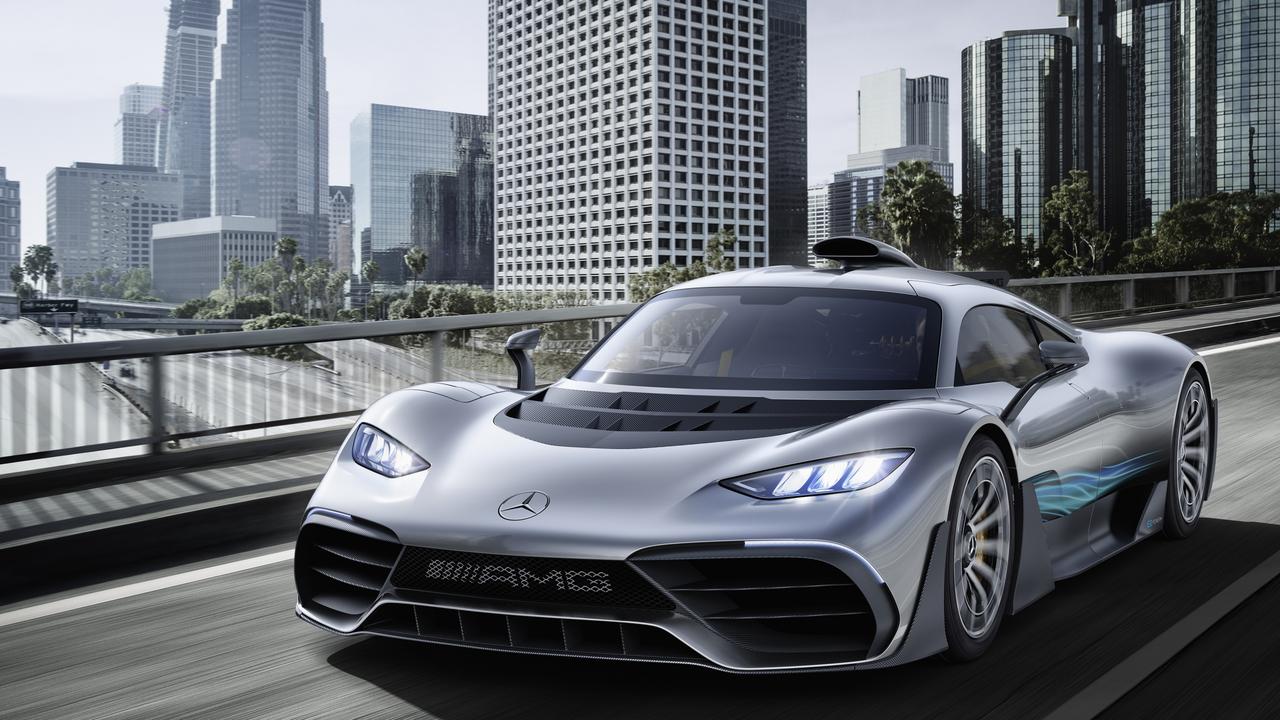Hyundai Kona Electric Highlander: it’s a winner
It’s fast, fun, stylish — and practical. Hyundai’s Kona Electric Highlander is ideal.
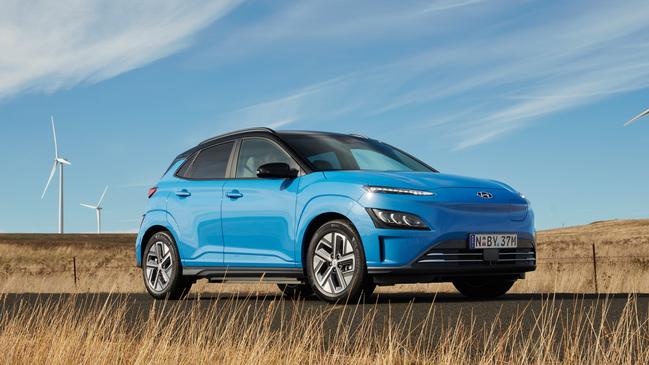
I have long suspected that everyone in the car industry is lying to me. Not just in a general, day-to-day, “no, this time you’ll really like driving a giant 4WD through a swamp at 6km/h for six hours” way, but in a grander sense.
I just don’t buy that they’re selling so many cars in this country, or I didn’t. From 2011 to 2019, allegedly, Australians bought well over 1 million new cars each year. Indeed, we bought more than 8 million cars over a seven-year period, in a country of just 24 million people, many of whom, let’s not forget, can’t drive because they can’t see over the steering wheel, or because they can’t see anything very well anymore.
That suggests that everyone is buying new cars all the time, everywhere, and yet that just wasn’t my experience, perhaps because I grew up in Canberra, where everyone was too busy doing burnouts in Street Machines to keep warm, and in the innermost parts of Sydney, where there’s no room for cars. And briefly in London, where there’s no point buying a new car because all the diesel in the air would quickly make it look like a smoker’s lung.
Recently, however, I decided to shun excitement, variety and vivacity in my life and moved to the suburbs, where those absurd figures make sense. Counting the cars parked not only in the treble garages and generous driveways but along the street outside my neighbours’ houses provides a good insight into how many people live inside, because it’s usually slightly fewer than the number of vehicles.
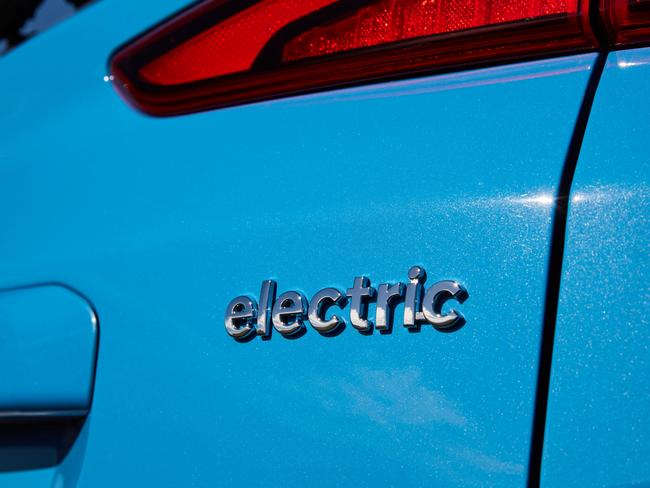
I understand that this is because everything is now too far away to walk to, but what I didn’t realise was that it would lead to my wife deciding we needed to buy a car.
Sadly, unlike me, she doesn’t like forming new relationships on a regular basis. But her need for motoring monogamy led to one of those rare, blissful moments in a marriage where I actually got something right by borrowing a Hyundai Kona Electric for six months (I believe the technical term is “kicking the can down the road”, because she’ll still want to buy a car when this one is returned).
The secondary benefit is that I can review it properly, because I’ll actually drive it for more than the usual week, which, to be unwisely honest, is a bit like reviewing a restaurant after only eating the entrees.
Personally, I chose the Kona EV for worthy reasons involving my Godzilla-sized carbon footprint, a growing fascination with electric vehicles and a strange desire to have a wall-box charger at my home (I think I imagined it as being like having my own petrol station, but so far there are still no Krispy Kreme stands or free magazines).
I also chose it because I just love the look of it: the way that removing the front grille from a combustion-engined Kona makes it look like Iron Man with resting Zen face, and the Surfy Blue paint mine – sorry, ours – is daubed in. And because I found it so revelatory to drive. I truly, deeply dislike driving the non-electric version of the Kona with its piddling 1.6-litre engine, but the difference between that and the EV variant is like chalk and yes please.
The Kona Electric has 150kW and 395Nm and apparently it takes 7.6 seconds to hit 100km/h, but that simply can’t be right because it feels much faster. It is also surprisingly fun to drive around corners for a small SUV (which, I’ll grudgingly admit, is close to Goldilocks-sized for inner-city zipping with my family) and is imbued with a sense of fun that my wife has fallen dangerously in love with.
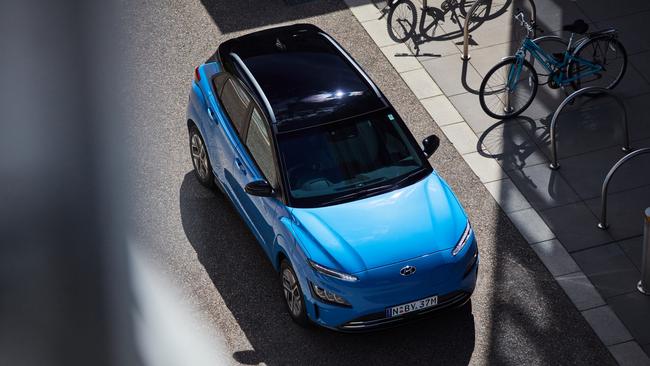
When I ask her why she adores the Hyundai so much she starts to babble, but I’m pretty sure it’s mainly the fact that people in sportier-looking cars are so regularly left shamefaced when she destroys them off the lights. I also enjoy the Kona’s Sport mode, but I am making every effort to ensure my beloved hoon doesn’t find out about that.
What really strikes home when you live with an EV is just how wrong we all are to worry about charging. Hyundai claims an impressive 484km of range for the Kona, but for some reason I am promised 498km when I charge it up at home, and even with all the spirited driving it’s clearly been involved in, it’s taking many days to empty the battery.
On the downside, some of the interior plastics just don’t feel like they are worthy of a car with a $66,000 price tag (I have the top-spec Highlander version because I really, really like a heated steering wheel, but the entry-level costs $54,500). And I can’t stand the system of changing gears by pressing buttons rather than shifting a lever, but this is not the only Hyundai boasting that example of fixing something that was working perfectly already.
Would I want to drive to Queensland in the Kona? No, but what this fun and funky little EV does represent is the perfect second car for a suburban family, and apparently everyone needs at least two or three of those.
Hyundai Kona Electric Highlander
ENGINE: Single electric motor (150kW/395Nm). Average 15.3 kWh per 100km
TRANSMISSION: 1-speed automatic, front-wheel drive
PRICE: $66,000
STARS: ★★★★

